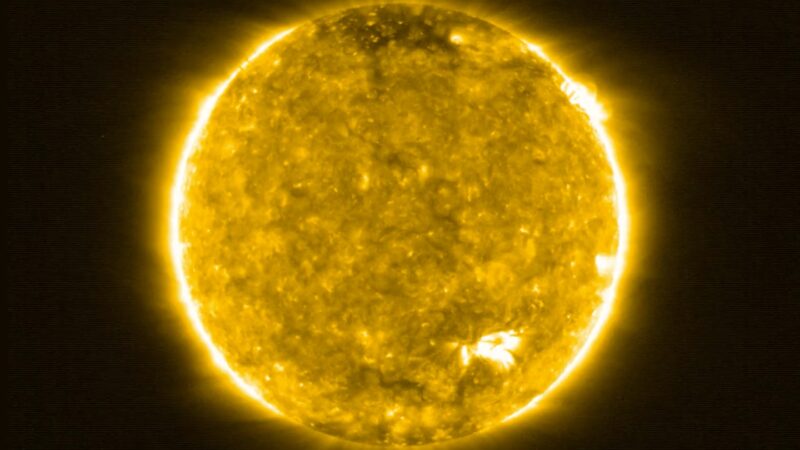
Campfire (noun, “KAMP FYRE”)
Campfires are small eruptions on the sun’s surface. They are similar to massive explosions known as solar flares and coronal mass ejections, or CMEs. But campfires are only about a millionth or a billionth the size of those outbursts.
The European Space Agency’s Solar Orbiter snapped the first pictures of campfires in 2020. To the probe’s ultraviolet camera, these events appeared as flickers of UV light. Like solar flares and CMEs, campfires are thought to arise when magnetic fields on the sun interact. But scientists are still teasing out just how the sun’s campfires ignite.
Campfires may be puny by solar standards. But they’re still pretty epic events. The smallest ones are a few hundred kilometers (miles) across. That’s about as big as Arkansas. And campfires can stretch thousands of kilometers above the sun’s surface. Each one lasts no longer than a few minutes. But campfires light up much more frequently than larger solar flares — which could help solve a longstanding mystery about the sun. Namely, why the sun’s outer atmosphere, or corona, is so hot.
The solar corona is millions of degrees Celsius. That’s much hotter than the sun’s surface, which sizzles at about 5,500° Celsius (9,930° Fahrenheit). Perhaps campfires, which boast temperatures around 1 million degrees Celsius, add heat to the corona.
In a sentence
The Solar Orbiter probe first spotted solar campfires when it was about half the distance from Earth to the sun.
Check out the full list of Scientists Say.
